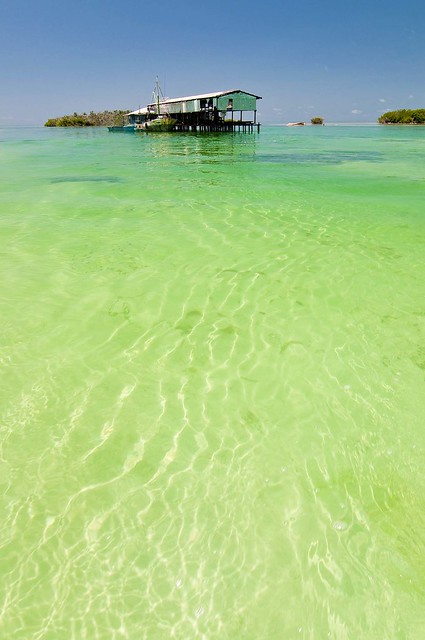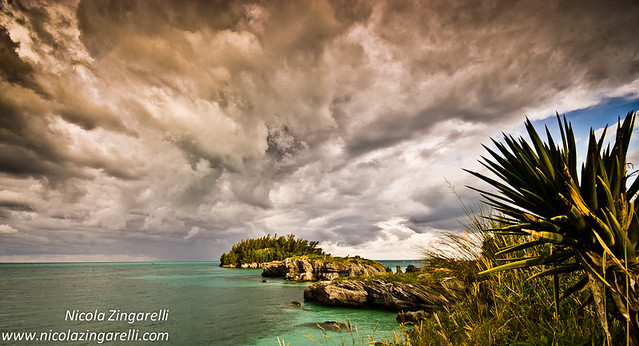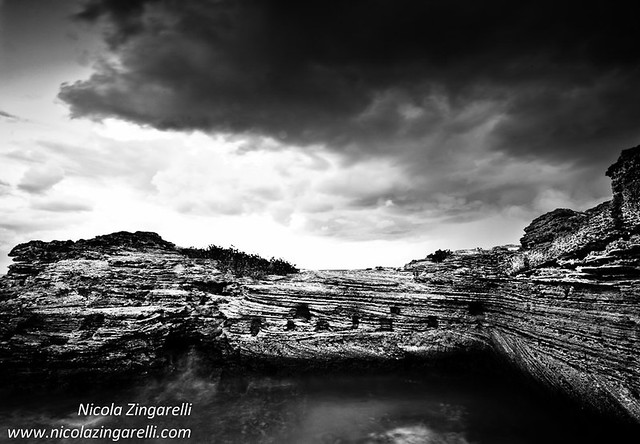When composing a seascape photo there are some elements that we want to combine in order to achieve a better shot. Having a nice scenary in front of your lens sure helps, but it might not be enough. A dull sky could kill our best intentions or a harsh directional light, can bury the image in a blink of an eye. Those fantastic sunsets don't go any further than the simple snapshot if we don't have a foreground that helps the composition, and this photo here might give an idea of what use can we make of any subject to strengthen the image.
Another important point to stress out is where to place the horizon. When we start moving our first steps in the magic world of photography we take specific care to put subjects and horizon exactly in the middle of the frame, something that could work for a very specific image, one in a hundred maybe... To give more strength to our photo we should try to move that thing to a different level, maybe higher, maybe lower, left or right, away from the dead center anyway. This is called rule of thirds and has been created by painters in the previous centuries, we are only borrowing it from them. The more extreme the latitude of the horizon, the more dramatic is the shot, even without a predominant foreground, like in this case.
We also need lines, straight or curved, that can somehow guide the view through the image, or to a specific point that we consider to be the most important of the image. A pinnacle of rocks that comes from one side of the image and slowly dives into the hot spot of the photo, will help the viewer scanning the frame and hitting the target, the dramatic stormy sky like in this shot for example.
Remember that we are on the coast; there are rocks, sand, stones, old logs, rippling water, many different elements with something in common: texture. This is an element that could create a shot on its own, it really depends how we are able to grab the light hitting the texture and what kind of editing we apply in post production. Even a gloomy sky has its own texture, and again it will help creating a dramatic atmosphere that looks so good on seascape shots. Black & white edit sometimes helps.
Last but not least, in fact is probably the most important thing of the whole creative process, the light. I'm not going to be the first one to tell you that a sidelight or backlight (when the sun is facing you) is the ideal one for your best image, but I'll be the millionth and one to repeate it because it really is the heart of the matter here. For several different reasons backlight is my favourite, but is also the more complicated to handle, in fact you will need grad filters (I used a tobacco grad here) to control it and even so, nailing the exposure and keeping the highlights under control will not be very easy. Pick up the sun when is low on the horizon, either at sunrise or sunset and your photo will gain some amazing long shadows and if you are lucky to have a cloudy sky with the red ball filtering through it, you're in photographer's heaven.
Tuesday, November 15, 2011
Subscribe to:
Post Comments (Atom)






No comments:
Post a Comment